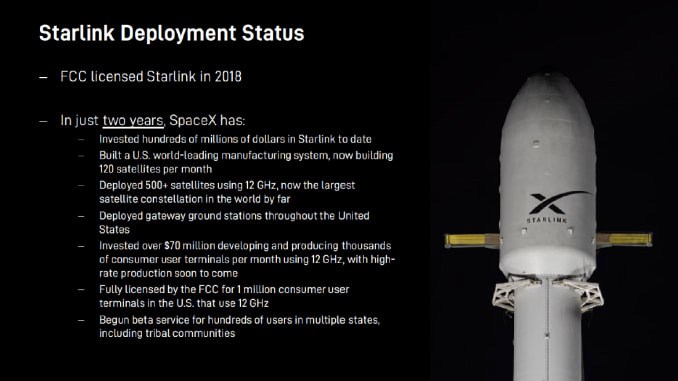Discussion
In March of 2020, the FCC authorized SpaceX to begin rolling out as many as 5 million ground antennas for its Starlink internet project as demand has exceeded expectations. This was a huge win for SpaceX as the company is working on growing its satellite constellation to 12,000. SpaceX is now capable of manufacturing 120 Starlink satellites per month, roughly 20x’s as many as Iridium, the current largest internet satellite constellation. SpaceX plans to complete the $10B Starlink program by 2021 which some analysts think could push the value of SpaceX towards $174B. SpaceX is one of many companies trying to get a share of the $1T satellite internet market.

Starlink’s initial services will be offered in the Northern United States and Canada with a focus on rural underserved areas. Starlink will beam its internet signal directly to consumers who buy their plug and play terminal offering latency below 20 milliseconds. Legacy broadband providers like Hughesnet, Earthlink, Xfinity, AT&T, Charter Spectrum, Comcast, and more provide services through land-based infrastructure that can be broken up mainly into two segments; transmission and connection. Transmission infrastructure includes thousands of miles of fiber optic cables and telephone lines spread across the country. Connection varies on cable type and the customer’s connectivity device. Building this infrastructure is very expensive, requires constant upkeep/upgrades, and has a limited reach.
We believe the internet is a utility and essential to every household in the country. Satellite internet connectivity offers a more efficient and potentially cost-effective solution to provide high-speed internet to as many people as possible.
Learn Something
Encylopedia .com: Internet Infrastructure
NTIA: Broadband USA
Broadband Now: The Complete List of Internet Providers in the US



